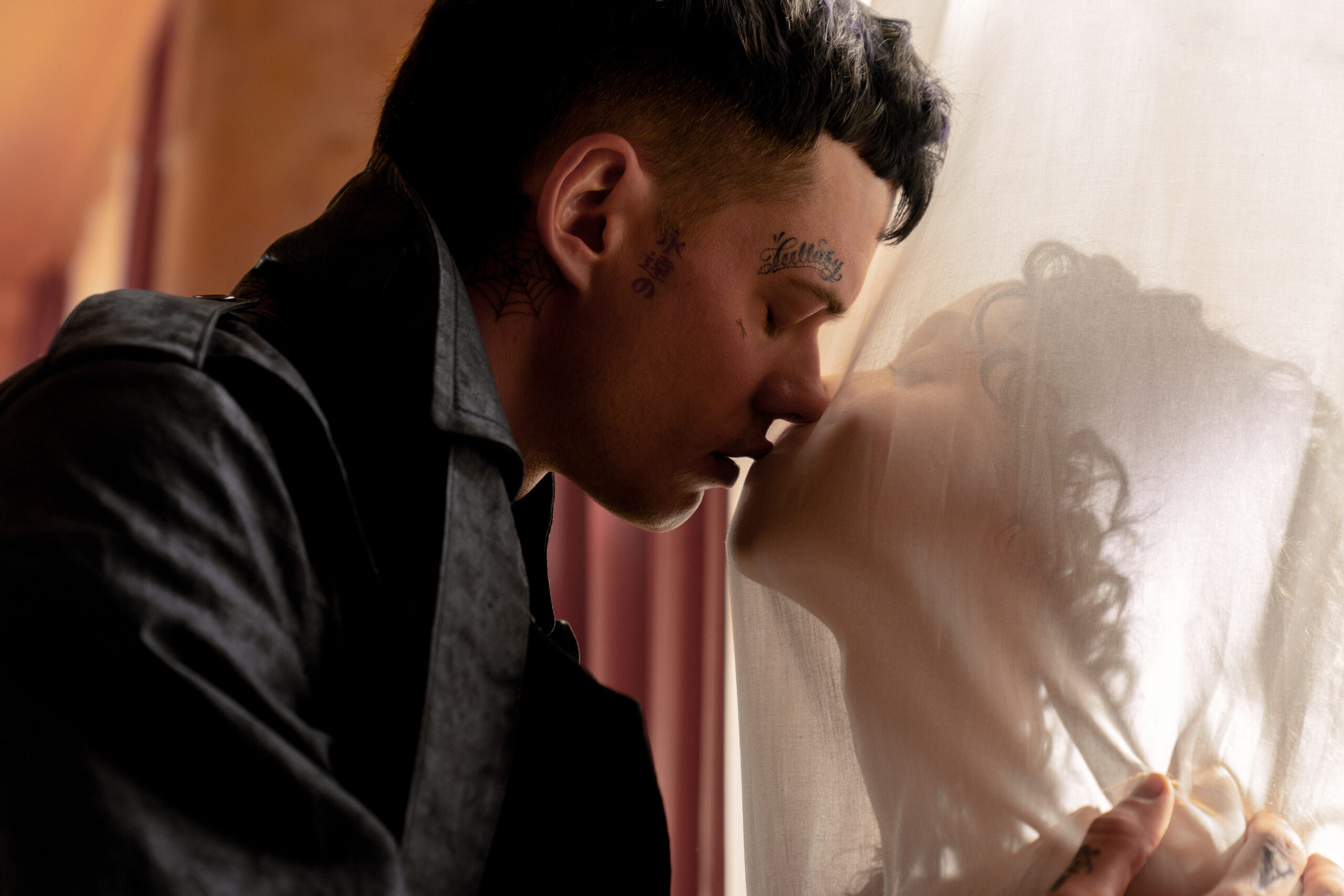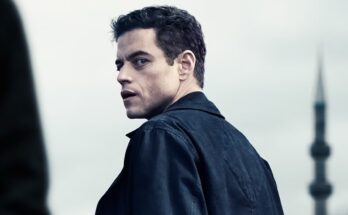Want to hear more from the actors and creators of your favorite shows and films? Subscribe to The Cinema Spot on YouTube for all of our upcoming interviews!
Managing editor & film and television critic with a Bachelor's of Arts in English Literature with a Writing Minor from the University of Guam. Currently in graduate school completing a Master's in English Literature.
Another adaptation of James O’Barr’s graphic novel, The Crow, makes its way onto screens after its tragic albeit mesmerizing debut feature film, three unrelated sequels, and an entire media franchise that I had no idea existed until now. This modern reimagining takes the main concept of the lore focused on Eric “The Crow” and Shelly’s love and commits to an almost entirely fresh narrative. On the one hand, O’Barr’s source material had its protagonist and his lover cross paths with several low-life gang members of Michigan. On the other hand, this new movie introduces a mob boss with a certain power. As a result, the reimagining is propelled in a whole different direction. Ultimately, where The Crow‘s narrative falls short of perfection, it at least achieves a delivery of its primary theme: love.
The Crow is written by Zach Baylin (King Richard, Creed III, Gran Turismo) and William Schneider and is directed by Rupert Sanders.
In this review, I will discuss The Crow. As the article’s title suggests, no spoilers will be present.

The Crow Synopsis
According to Lionsgate Publicity, here is the synopsis for The Crow.
Bill Skarsgård takes on the iconic role of THE CROW in this modern reimagining of the original graphic novel by James O’Barr.
Soulmates Eric (Skarsgård) and Shelly (FKA twigs) are brutally murdered when the demons of her dark past catch up with them. Given the chance to save his true love by sacrificing himself, Eric sets out to seek merciless revenge on their killers, traversing the worlds of the living and the dead to put the wrong things right.
Lionsgate Publicity
Discussion
Eric (Bill Skarsgård)
When someone you love dies, you will know emptiness… You will know what it is to be completely and utterly alone.
The film’s opening scene introduces Eric (Bill Skarsgård) at a younger age. It’s such a surprising scene that sets the tone of the entire narrative. The Sparklehorse panels never made their way to Alex Proyas’s original film, so including that in this reimagining contextualizes the protagonist’s ethos in a manner that hasn’t been seen before. That, paired with the title sequence of Eric submerged in black liquid, makes for a solid jumpstart to the franchise’s reboot. Like Sparklehorse, the opener is unique in how it harkens back to musician John Bergin’s source material introduction, “In A Lonely Place.” Despite being new to the screen and exciting for fans familiar with the source material, the rest of the film isn’t as consistent as the introduction at taking matters up a notch.
Baylin and Schneider weave moments and scenes together but few contain any significance until they reach the final act. Vincent Roeg (Danny Huston) is written in as a new antagonist for The Crow lore. However, the film hardly showcases—aside from explicitly telling—how he becomes what he is. The screenwriters also insert side characters who serve no purpose or quality worth caring for. The most depth viewers will get is with the main characters, but even then, both are developed to a degree.
Assembling the Monster & Bringing the Phantasm to Life
Everything about The Crow, from music composer Volker Bertelmann’s scoring of the title sequence to production designer Robin Brown’s juxtaposition of Eric and Shelly’s (FKA Twigs) apartment to the stunt coordinators’ assistance makes the viewing experience memorable.
The element involving classical music and opera exhibition provides a nice touch. Even playing piano or acting on a stage is a performance on its own. In the early 1980s, O’Barr named his protagonist after The Phantom of the Opera, so it’s fitting for the plot to come back to those roots. The action sequences throughout the film occur so far apart from each other. Yet, when they do play out on screen, they are all marvelous thanks to the assistance from the stunt coordinators and doubles. Eric has a few phenomenal sequences that are bloodier and gorier than in Proyas’s film, and I would have loved for the film to have an extended runtime in favor of those alone.
The origin of Eric’s physical appearance as “The Crow” has an uncanny build-up that feels emblematic of current-day live-action Marvel adaptations. Eric must earn his look, and irritatingly so, it takes a while for him to encounter pieces that make the character so iconic. While Eric and Shelly in the source material love expressive art—specifically painting, puzzles, and music—, the lovers in the film share a love for music and tattoos. The Crow’s look is deserved by the closing act. Still, the odyssey taken to arrive there is quite arduous.
Callbacks to the Graphic Novel and Mythology
English post-punk band Joy Division makes an appearance in the soundtrack. O’Barr cites them as partially what helped him through grief. According to the source material, the author had a fiancé who was killed in a drunk driving incident when they were teenagers. Likewise, poetry by Arthur Rimbaud makes a “cameo” appearance; blink, and you might miss it. The French poet and Joy Division are but two on a list of names cited throughout O’Barr’s The Crow. Interestingly, the film taps back into that artistic nature, and it’s nice to see how much it honors that side of O’Barr as a storyteller.
The inclusion of Kronos (Sami Bouajila) is intriguing for fans of the source material. Although it is apparent that he is an original character for the film, novelist A.A. Attanasio cites the mythological being in the graphic novel’s afterword as a “chief deity” who got his name from the archaic Greeks. As The Crow, Eric’s superhuman abilities are implied to be godlike through the force of love. It’s a neat pivot away from the gothic aspect of the supernatural.
Bloody Mary appears in the film, but not in the way one would think. The allusion—or rather, metaphor—here is clever. Both this folklore legend and The Crow are ghostly figures who appear when a group engages in an activity that calls them into being. While Bloody Mary is not an established character in O’Barr’s graphic novel or related media, it is surely a merit-worthy reference. It adds another layer to the storytelling that offers depth to the title character as a whole.

The Crew Behind The Crow
Volker Bertelmann serves as the musical composer of the film’s soundtrack. Nick Chuba scores additional music. Richard Armstrong and Jack Sugden serve as the music editors.
In post-production, Michael Maroussas and Jimmy Boyle serve as the supervising sound editors. Boyle also serves as the sound designer. George Riley and Piers Lawrance serve as the sound effects editors. Riley also serves as the co-sound designer.
Marisol Roncali, Chelsea Ellis Bloch, and Des Hamilton (Melancholia, Enter the Void, Only God Forgives, High Life, Jojo Rabbit, HBO’s Irma Vep) serve as the casting directors.
Ian McCaffrey (A Monster Calls, Into the Badlands, Marvel Studios’ Secret Invasion) and Emanuele Contarini serve as the film’s storyboard artists.
Adam Horton and David Listvan serve as the stunt coordinators. Jacob Griffin serves as the assistant stunt coordinator. Godfrey Ryckewaert serves as the fight choreographer for Bill Skarsgård.
Julia Zahner is the visual effects editor.
Robin Brown serves as the production designer. Guy Bradley serves as the supervising art director.
Kurt and Bart serve as the costume designers.
The Cast of The Crow
Bill Skarsgård (Andy Muschietti’s It duology and the upcoming It: Welcome to Derry, Sam Levinson’s Assassination Nation, Chloé Zhao’s Eternals, Zach Cregger’s Barbarian, Chad Stahelski’s John Wick: Chapter 4, Robert Eggers’s Nosferatu) portrays Eric, the protagonist of the film.
FKA Twigs portrays Shelly Webster, Eric’s love interest.
Danny Huston (30 Days of Night, X-Men Origins: Wolverine, Wonder Woman) portrays Vincent Roeg, cited via Lionsgate as “a titan of industry who mentors and then discards bright young talents [and] in horrible ways, embodies darkness and evil.”
Sami Bouajila portrays Kronos, cited via Lionsgate as “a character who exists between heaven and hell.”
Laura Birn plays Marion, Roeg’s aide and right-hand woman. Tundy Smith portrays Lex, one of Roeg’s hired men.
Josette Simon plays Sophia Webster, Shelly’s mother.
Isabella Wei and Sebastian Orozco play Zadie and Dom, close friends of Shelly’s, respectively.
Darija Pavlovičová plays Gray, a piano player under Roeg’s employment.
Jordan Bolger (Peaky Blinders, The 100, The Book of Boba Fett, The Woman King) plays Chance, a tattoo artist and a friend of the two love interests.
Dukagjin Podrimaj appears as Detective Milch.

Performances and Character Developments
Skarsgård and Twigs’ chemistry is potent enough, and I find that their relationship as Eric and Shelly lasts longer than the characters in the original film. Skarsgård possesses a kind spirit as the protagonist, while Twigs is soft-spoken as his lover. Together, there is a dynamic here that viewers will come to have an affinity for, with Eric loving her “aura” and she taking a liking to his brilliant temperament. Contextualizing how the lovers meet, fall head over heels for one another, and hit it off rather quickly adds to the story’s gradual pacing. However, that also makes a point that Shelly’s life matters just as much as Eric’s. More than anything, it comes down to a reflection of James O’Barr, his own lost love, and what she must have meant to him as a person.
The sequence that shockingly mirrors “The Creation of Adam” has excellent insinuations for the two characters. Fans and viewers learn how the co-existence of Eric and Shelly needs to happen for both of them to come into being. Consequently, Eric cannot become The Crow without Shelly’s death, and he cannot deliver her to salvation without first fulfilling his mission as the godlike figure. Skarsgård is born for the role, especially with his Pennywise face and physique leaving a mark that is impossible to efface. Still, his iteration of the character needs a stronger connection to expressive art. While I’m not too acquainted with Twigs as a performer, she sets the bar for Shelly and the meaning she holds. I’m curious as to what impact she could have on the franchise, in case the action and romance earn this reboot more sequels.
Final Thoughts on The Crow
With a total of twenty-five executive producers, just the fact that The Crow had the opportunity to see the light of day again is a miracle. Sanders succeeds in crafting a narrative “as universal as an epic poem or Greek myth” just in how Eric allows love to conquer negative forces. The ending might haunt a generation, but that is only part of the risk in resurrecting this tale. If there is one thing to take away from this film, it’s the fact that pure belief in love is a strength that permits a person to break boundaries, and I think that’s righteous storytelling in and of itself. Running at nearly two hours, Sanders, Baylin, and Schneider’s adaptation is a sufficiently beauteous work of art.
3.5/5 stars
The Crow is now playing in theaters!
For more action, adaptation, crime, fantasy, horror, romance, supernatural, and thriller-related news and reviews, follow The Cinema Spot on Facebook, Twitter, and Instagram!
Unfamiliar with The Crow? Well, you’re in luck! Purchase a physical copy of James O’Barr’s 1989 source material graphic novel series via our Amazon Affiliates links: hardcover and trade paperback!
Managing editor & film and television critic with a Bachelor's of Arts in English Literature with a Writing Minor from the University of Guam. Currently in graduate school completing a Master's in English Literature.




